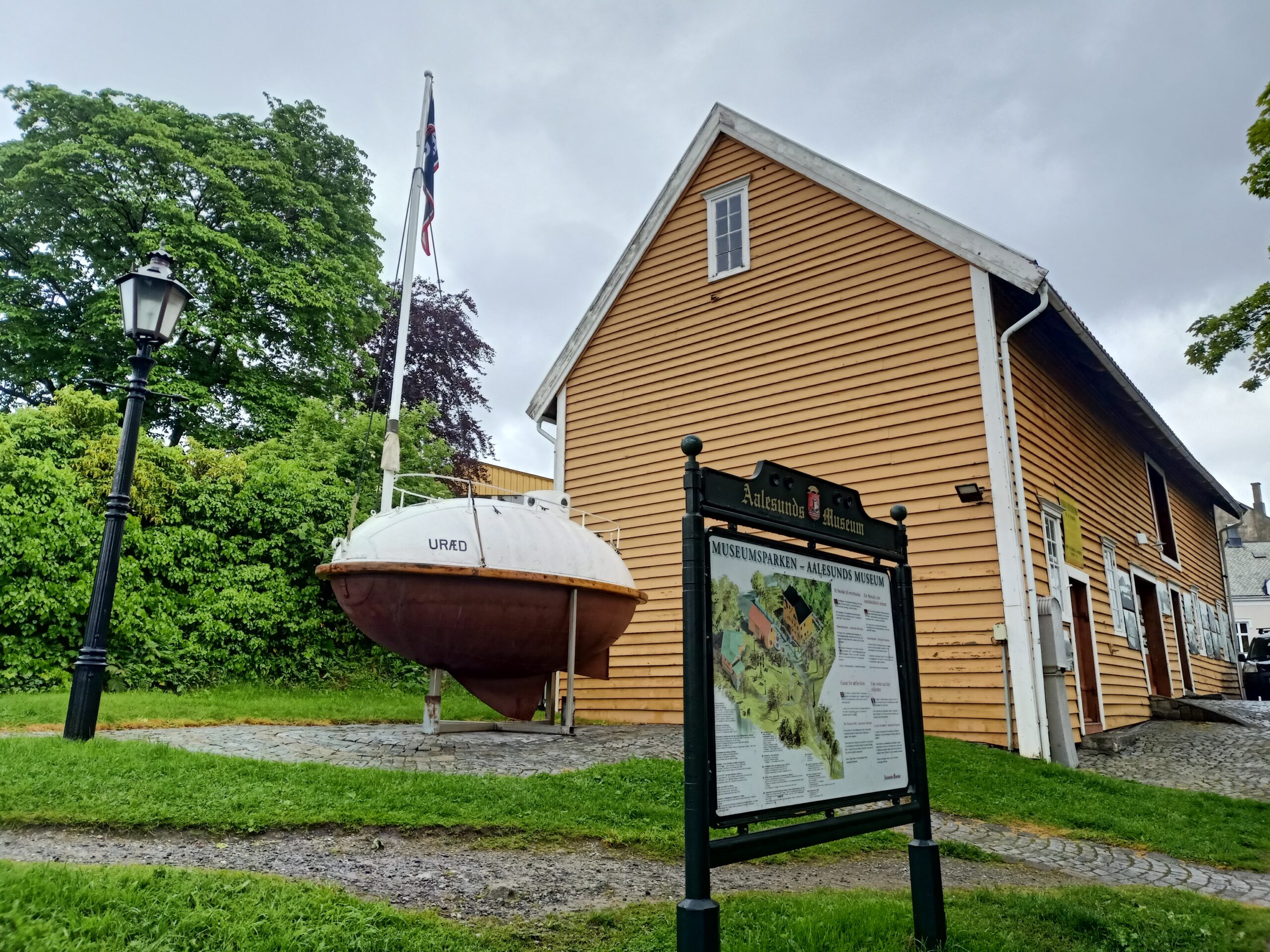
There’s something appealing about being off the main track like in Stadlandet, but now we’re wishing for more ‘life’ again, more infrastructure, more civilisation. At least I do. Because travelling through the remote areas, as beautiful as they may be, takes energy. Draining. Especially in this weather.
So we decide to drive to Alesund – a stone’s throw away, less than two hours through the soberly beautiful island world that protects us from the raw Atlantic.
And I am overcome by the thought: how on earth did these people, these Vikings, get out into the open Atlantic; how did they reach the islands of the Faroe Islands, how did they reach Iceland and later Greenland and even ‘Vinland’, i.e. the east coast of today’s Canada and the USA? And why? Why did they go out ‘just like that’, when here, in this coastal area of Norway protected by the islands, it is indeed hard, but also so much more comfortable?!
It may not have been population pressure, nor pure desire to discover – did they, the fishermen, come across all these islands because they were following the schools of fish in search of food? And then realised that there were real livelihoods on these islands and stretches of land (remember, it was much warmer back then than it is today), so that they could finally emigrate and bring their families over? Or did they want to emigrate because the constant conflicts and warfare got on their nerves and they just wanted to work and live without serving an authority? Like with us in the Jura, the Franches-Montagnes?
Discovering new lands – a human move that releases forces, creates innovation, and continues to write history: with the Argo to the Caucasus, with the Fram to the North, then to Antarctica, and with Musk to Mars… We are like that. And I’m behind. Want to see for myself.
Well, Alesund is relatively big, with about 50’000 inhabitants, busy, a hub. Today it is also a harbour for the Queen Marry II, which is moored next door. And seems to tower over the city.
The harbour fees are horrendous, but there is nothing here, not even toilets. Sailors must be selfless in Norway, or have everything on board. (The harbour master tells us lapidary: go to one of the restaurants here…). But there are fishermen. They sell their goods directly after the catch at the harbour – we stock up on shrimps, uniquely fine! And we go on a city tour, pass a super-modern indoor swimming pool, and enjoy the rainy day with swimming in the warm water, taking a sauna, relaxing.
Also to be seen in Alesund: the Brudeegget, a floating rescue capsule and forerunner of today’s enclosed lifeboats, which are now carried on all (cruise) ships. And they help those to survive who are heading off into the distance in an organised way and are in danger of drowning. – A clever and courageous guy, deeply convinced of his idea, this Ole Martin Brude (definitely google him!).
In the evening we go to a somewhat better restaurant. Interesting: most of the restaurants recommended to us seem to be fully booked. – We just go and let ourselves be surprised, and get a table even without a reservation. And let ourselves be served.
Funny: all the restaurants we stop at on the way are owned by Norwegians, but run by guest workers. They bring a southern flair (and Mediterranean cuisine) here that is really enriching. And it does us good. Before we crawl back into the wet, cramped cabin to sleep.